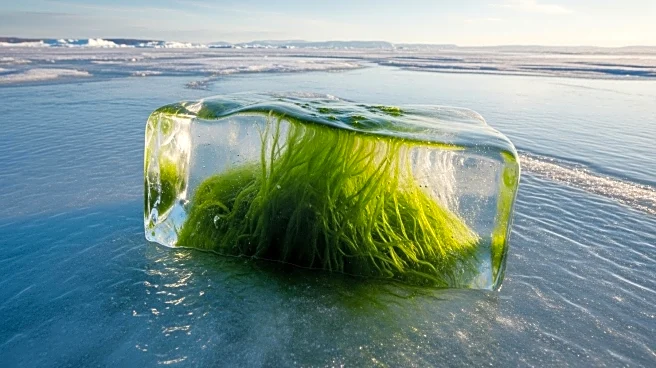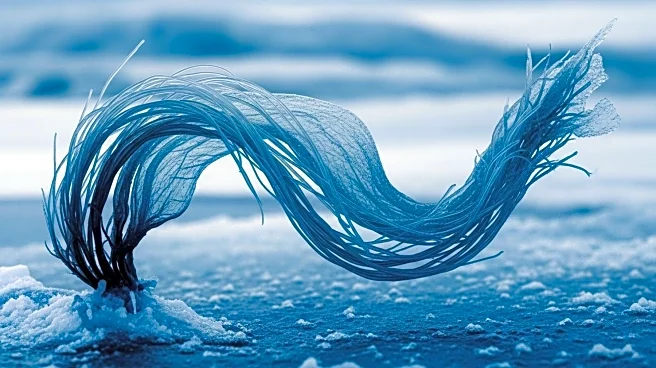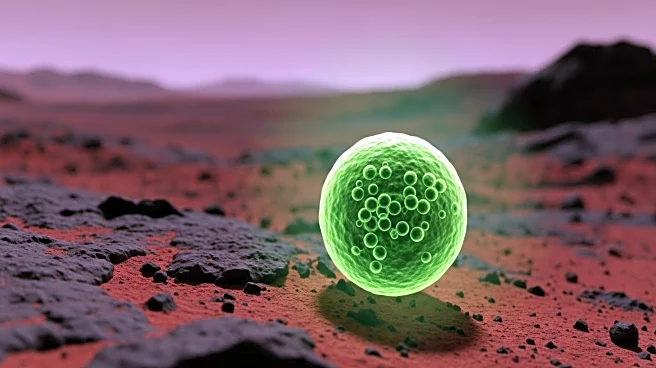What's Happening?
Recent research has revealed that a specific type of algae, known as ice diatoms, is far more active within Arctic ice than previously believed. These single-celled organisms, which possess glassy outer walls, have been observed gliding across and within their icy environment, defying assumptions about the mobility of extremophiles. The study, published in the Proceedings of the National Academy of Sciences, highlights the algae's ability to thrive in temperatures as low as -15°C, a record low for eukaryotic cells. Researchers collected ice cores from various Arctic locations and replicated the conditions in a lab to study the diatoms' behavior. The algae use a polymer secretion to move, suggesting they play a significant role in the Arctic ecosystem.
Why It's Important?
The discovery of active algae in Arctic ice has significant implications for understanding the Arctic ecosystem and its response to climate change. These algae may contribute to the cycling of resources in the region, potentially affecting the food chain and ecological balance. As climate change continues to threaten the Arctic, understanding the role of these organisms could provide insights into the resilience and adaptability of life in extreme environments. This research underscores the importance of protecting and studying Earth's ecosystems to better understand broader environmental changes.
What's Next?
Further research is needed to determine the full ecological impact of these algae and their role in the Arctic environment. Scientists may explore how these organisms interact with other species and contribute to nutrient cycling. Additionally, the findings could prompt more studies on extremophiles and their potential applications in biotechnology and climate science.
Beyond the Headlines
The study of extremophiles like ice diatoms could lead to advancements in understanding life in extreme conditions, potentially informing astrobiology and the search for life on other planets. The algae's unique mobility and survival mechanisms may inspire new technologies or materials designed to withstand harsh environments.











